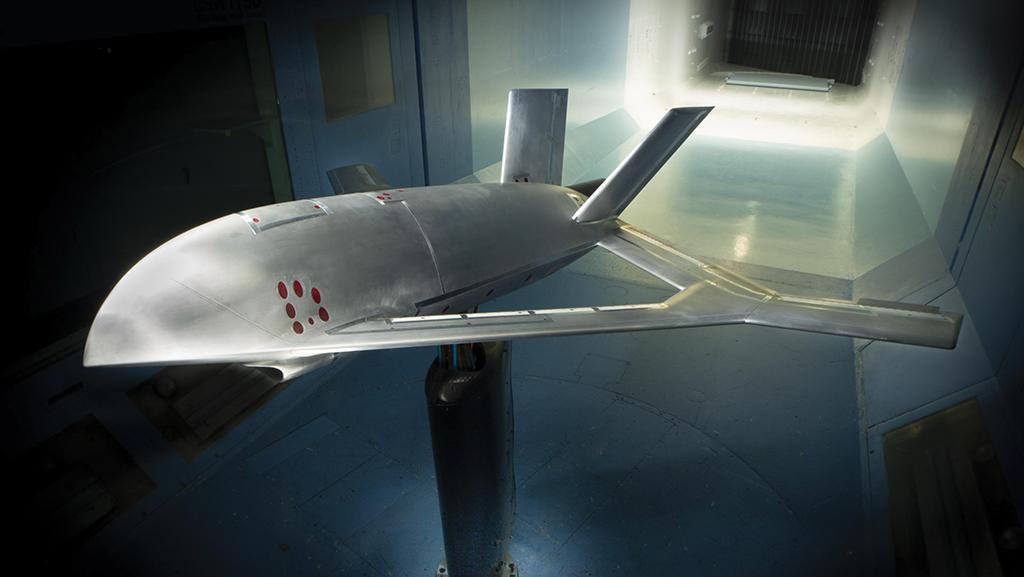
The scaled-down, cheaper approach used to develop the Aurora Flight Sciences X-65 is typical of a new DARPA management strategy focused on getting new X-planes into flight test.
For six different experimental aircraft being developed by DARPA, the first “breakthrough” achievement would be to get built—and then flown.
From fiscal 2003-16, the Defense Advanced Research Projects Agency launched 19 unclassified X-plane development projects, with each seeking a different aeronautical breakthrough, an Aviation Week analysis of agency budget documents shows. However, only two X-planes made it off the drawing board and into manufacturing. And only one—the seven-year-old Gremlins program—achieved a first flight.
- Shepard scheduled to begin flight tests
- Liberty Lifter might be rebaselined
Ken Plaks, the newly appointed director of DARPA’s Tactical Technology Office, inherits a diverse portfolio that includes six X-plane projects (see table). Unlike most of their predecessors, all six appear on track to break the two-decade-old trend. Two have been built or are in manufacturing, another is in design finalization, and the last three are involved in competitions to select a manufacturer.
A new strategy DARPA embraced in 2020 is responsible for ushering X-plane programs beyond the design phase, Plaks says.
“The older way of doing things . . . we would kind of build a bridge to nowhere. We would design the plane, but then look for partner funding to help build it. And if we didn’t get partner funding, we wouldn’t build it,” he says. “And that’s very unsatisfying for a couple reasons. We’re engineers, and we like to build stuff. But you’re [also] not really answering the question.”
In many cases, DARPA has reversed the process of soliciting the armed services for financial support for a new project. Instead of asking for tens or hundreds of millions of dollars up front from one or more of the armed services, the agency’s program managers are now trying to self-fund projects at a smaller level to demonstrate whether the essential breakthrough technology works.
“If I were to go to the Navy or the Air Force and say, ‘I need $100 million for your share to build this airplane [and] we don’t even know if it’s going to work,’ that’s a hard thing to do,” Plaks says. “But if I can build a smaller airplane and demonstrate that we’ve slain the dragon and actually solved the technical issue . . . it increases our likelihood of getting partners to join us on a follow-on phase.”
Since 2020, DARPA has advanced two programs to the agency’s Phase 3, the start of manufacturing. The Series Hybrid Electric Propulsion Aircraft Demonstrator (Shepard)—a stealthy follow-on to the Northrop Grumman XRQ-72 Great Horned Owl—is scheduled to enter flight testing by year-end. In July, DARPA awarded a $94 million contract to General Atomics Aeronautical Systems Inc. (GA-ASI) to start building the LongShot X-plane, an air-launched uncrewed aircraft system (UAS) designed to fire multiple air-to-air missiles and extend the striking power of fourth-generation fighters.
Meanwhile, Boeing and Aurora Flight Sciences have entered Phase 2 of the Control of Revolutionary Aircraft with Novel Effectors (CRANE) program, which will finalize the design of the X-65 UAS with fluidic flight controls. The development strategy of CRANE is typical of the new model for DARPA’s X-Plane projects.
“The airplane that we’re building is very much a technology demonstrator,” Plaks says. “It’s never going to be an operational airplane or even close to one. It is all about testing out the aerodynamics and building the design tools that would allow you to build a real operational airplane.”
The new philosophy has prompted an internal review of the Liberty Lifter program, which entered the concept definition phase last year with awards to GA-ASI and Aurora Flight Sciences.
The program was conceived in 2021 with two breakthrough goals: applying the shipbuilding industry’s cheaper structural materials to a transport aircraft and mastering the autonomous algorithms required to safely fly a wing-in-ground-effect vessel slightly above rolling seas with waves up to 18 ft. high. But the original program also called for other advanced features, including a distributed, hybrid-electric propulsion system and C-17-size cargo volume.
“Could we build a slightly smaller airplane with the money that we’ve set aside and actually solve [those] problems?” Plaks asks. “So we’re actually looking at the Liberty Lifter in particular to re-baseline that program.”
A vertical-takeoff-and-landing (VTOL) X-plane funded by the Advanced Aircraft Infrastructure-Less Launch and Recovery (Ancillary) program also is in the concept definition stage, with multiple companies competing to design a MQ-9-size UAS that can operate from a destroyer-size ship. Finally, the Speed and Runway Independent Technology (Sprint) project will seek to push the boundaries of high-speed VTOL beyond the 300-kt. speed of the Bell V-280, with a goal of achieving 400 kt.





